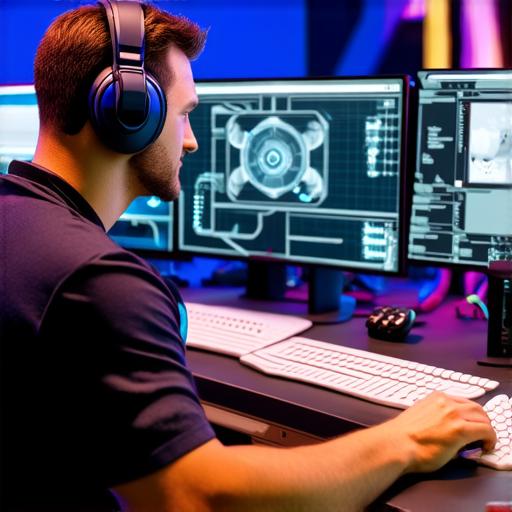What does a 3D asset developer do?
Introduction
In recent years, the demand for skilled 3D asset developers has grown exponentially in the gaming industry. These professionals are responsible for creating the visual elements that bring games to life, such as characters, environments, and props. They use a combination of computer-aided design (CAD) software and programming skills to create highly detailed and realistic 3D models.
Key Responsibilities of a 3D Asset Developer
1. Creating 3D models
The primary responsibility of a 3D asset developer is to create high-quality 3D models. They use specialized software, such as Blender or Maya, to model characters, environments, and props. These models must be highly detailed and realistic, with textures, lighting, and shading that make them appear lifelike.
2. Texturing and lighting
Once the 3D model is complete, the asset developer applies textures and lighting to give it depth and realism. They use specialized software to create or source textures, such as skin or fabric patterns for characters, and then apply these textures to the 3D model using techniques like mapping and UV unwrapping.
3. Rigging and animation
A 3D asset developer may also be responsible for rigging and animating models. Rigging involves creating a virtual skeleton for the character or object, which allows the model to move realistically in the game world. Animation involves creating movement cycles, such as walking, running, and jumping, that make the character or object appear alive and dynamic.
4. Optimization and testing
Finally, the asset developer must optimize their models for use in the game and test them to ensure they are functioning properly. They may need to make adjustments to the model’s texture maps, lighting, or animation to improve performance or fix bugs.
Skills Required for a 3D Asset Developer
1. Strong CAD skills
To be a successful 3D asset developer, you need strong computer-aided design (CAD) skills. This includes proficiency in using specialized software like Blender or Maya to create high-quality 3D models.
2. Technical artistry
A 3D asset developer must have technical artistry skills to create visually stunning and realistic models. They need to be able to apply textures, lighting, and shading in a way that makes the model appear lifelike and believable.
3. Programming skills
While not always necessary, programming skills can be helpful for a 3D asset developer. For example, they may need to use scripting languages like Python or C++ to create custom animations or modify existing models.
4. Collaborative skills
Asset developers often work closely with other members of the game development team, such as artists, designers, and programmers. They need to be able to communicate effectively and collaborate to achieve a common goal.
Real-Life Examples of Successful 3D Asset Developers in the Gaming Industry
1. Nvidia’s Ray Tracing Demo

Nvidia’s Ray Tracing demo showcases the power of real-time ray tracing technology, which allows for highly detailed and realistic lighting effects in games. The demo was created by a team of 3D asset developers who used specialized software like Blender to create stunning 3D models and apply intricate lighting effects.
2. The Witcher 3: Wild Hunt
The Witcher 3: Wild Hunt is one of the most visually impressive games of all time, thanks in large part to the work of its talented 3D asset developers. These professionals used a combination of CAD software and custom scripts to create highly detailed characters, environments, and creatures that bring the game world to life.
Conclusion
<p
